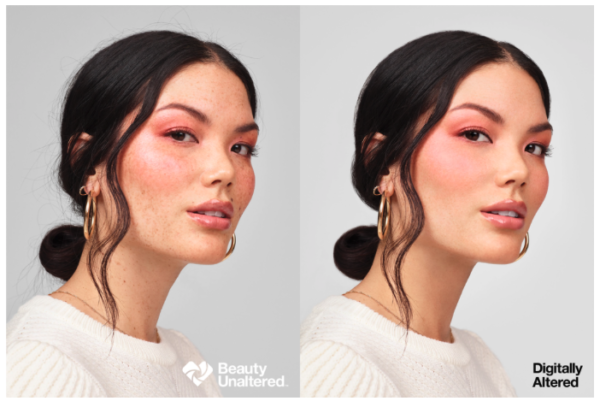
Picking the right stock photography for your practice’s website can present the organization as either a prominent aesthetic practice or a modeling agency or makeup line. The right images bring needed vibrancy to websites that otherwise would be lifeless.
In a previous blog entry, we discussed the importance of photo galleries (Effective Photo Galleries Are Worth More Than 1000 Words) as an area where practices showcase their before-and-after photo studies. While this post pertains to stock photography, note that before-and-after images accompanied by procedure details, patient geography, and demographics are vital and must not be ignored. A productive and engaging website will effectively feature both sources of imagery.
So how can you pick stock photography that accurately depicts relevant treatments while also reflecting your practice’s aesthetic? When picking stock images for a practice website, it’s helpful to stick to the three Cs: color palette, composition, and context.

When it comes to color, you might be inspired by shades and hues found in your practice logo, your office’s decor, or even your geographical region. Browns, reds, and golds, for example, can invoke the majesty of high mountain desert colors in cities like Tucson or Albuquerque, while the reds and oranges inspired by the Golden Gate Bridge, as well as blues of the water beneath, can represent the San Francisco Bay Area. Just be aware that any chosen colors must provide sufficient contrast to the font treatment and website’s overall color palette, so the text will be readable and the other design elements stay sharp for site visitors. We advise against a color palette that is completely based on skin tones for fear of a practice website giving the impression of a spray tan salon. Lastly, consider that with stock images of human models, eye and/or clothing color can “pop” against the website’s color theme, and especially against websites’ conservatively deployed colors used in call-to-action hot links.
The next area of concern for stock photography is composition. Start from the position that stock photography choices must first do no harm. Instead, they must complement textual content and graphical design in use of white space, horizontal vs. vertical display, and other factors. Be mindful that images may be seen on a desktop monitor or on a smartphone or other portable device. Images that look fine on a laptop could overwhelm the user experience on a smaller screen, creating a distraction that pulls visitors away from researching aesthetic services. One last note of caution: Your site is not the September issue of Vogue, full of only large, glossy photographs that someone will flip through and then forget ever seeing.
This brings us to context. Stock images should depict not only the desired results of a treatment, but also the demographic, lifestyle, and potentially even geography you are targeting, among other things. If there are procedures in the practice intended for a younger demographic, such as minimally invasive injectables or topicals, there should be images that appeal to that specific age group. Be aware, however, that younger visitors may be more aware of digital manipulation in images. Various brands—including CVS, Dove, and H&M—have stopped airbrushing in their ad campaigns, citing an audience that gravitates toward depictions of realistic beauty standards as opposed to super-models. Likewise, images of lithe 23 year olds on pages explaining a tummy tuck or Mommy Makeover might alienate older patients who are more likely to choose the surgery and want to look their best for their age.

These contextual concerns certainly vary from practice to practice. Midwestern plastic surgeons may have a different patient base and aesthetic than those in areas with prominent fashion industries, such as Los Angeles or New York City. (And on that note, consider that if patients would consent to you using their images in your website, then certainly do it! Based on our clients’ experiences, “Actual Patients” labeled as such are invariably valued more highly by people considering services.)
Consider that a good resource for model or procedure images can be large outside vendor companies of injectables or equipment. Their high-quality images are great for use in your specials and social media, but you should ensure the images can be tweaked when possible to have your own branded style. This could mean including your logo or adding decorative frames. However, we would advise against using these images as-is on your main website pages. Your site should be different from other practices and not like a brochure for vendor’s products. Remember that your website must reflect all of your services, even if you do want to heavily feature particular procedures or treatments.

Discreetly label stock photography of people with the word “model.” This lowers the risk of a practice suffering from unfavorable reviews (or worse) from visitors whose unrealistic expectations were set by stock models, as opposed to depictions of actual patients. Use a small font so that the text does not interfere with the image.
Many online stock photography agencies list how many times a photo has been downloaded. Consider if an image has been downloaded too many times, as that means using it might dilute the practice’s brand. Be patient when scrolling through images from stock photography sites, as the first listed images may be the most downloaded.

While overly sexualized images might be titillating, they can be distracting from the credentialing and authority of the doctor and the organization. Your practice marketing may be focused on outward appearances, but in the end, you have to be connecting with your prospective patients’ personal thoughts and goals. A stock photograph of a model in a bikini may show the physical ideal, but a photograph of a laughing woman in a sundress can express the inner change that a patient is seeking through your services.
Consider the three C’s before seeking stock photography to quickly narrow in on images that convey your practice’s services and sense of aesthetic style. Every page and every image within your website provides another opportunity to relate to, to inspire, and to engage potential patients. Thoughtful consideration of these factors and your desired clientele can lead you to pick the most productive imagery for your practice.

Anna M. Lincoln
Anna M. Lincoln is a business development associate at MetaMed Marketing. Prior to MetaMed, Anna worked with physicians at the University of California, San Francisco School of Medicine in their Continuing Medical Education Department as their web content manager and email marketer. She has over 20 years of experience building and maintaining websites.



